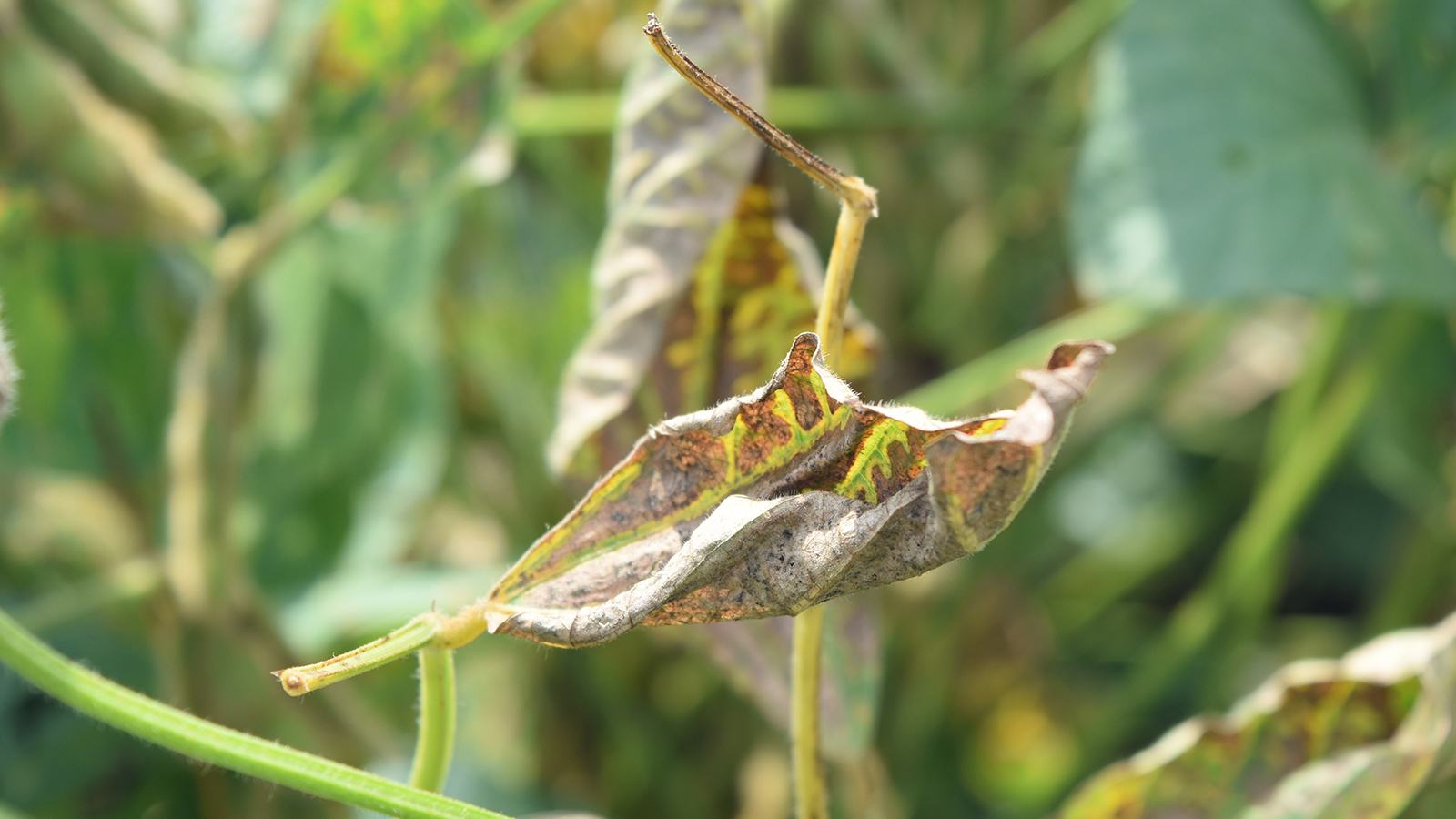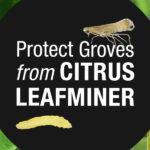Studying the Connections Between Sudden Death Syndrome and Soybean Cyst Nematode
When one is found, the other is likely present, resulting in a drop in yields.

It’s safe to say that most farmers know about soybean cyst nematode (SCN). It is found in nearly every soybean-growing county in the United States. That sudden death syndrome (SDS), another yield-robbing soybean disease, increasingly impacts those same fields is perhaps a lesser-known fact. But researchers are working to reduce the impact of both problems, while digging deeper into the relationship between them. Think of SCN as the “canary in a coal mine” – meaning that its increased problematic presence encourages more SDS to be seen, and thereby growers recognize that SCN is out of control.
Identifying SCN through SDS
Sudden death syndrome affects soybeans in two phases: early in the season as root infection and then in August as leaf canopy foliar symptoms. Early cool, wet conditions slow soybean development, which encourages heavier Fusarium virguliforme root infection. Fusarium virguliforme toxins travel upward through vascular tissue, which causes the tissue to clog and lead to the more visible symptom: yellowing and browning leaves that eventually fall off, leading to premature defoliation.
Below the soil, SCN appears as small white or cream-colored cysts on the roots. These cysts – which contain 200 to 300 SCN eggs each – are approximately the size of the period at the end of this sentence. These cysts eventually turn brown, making them hard to detect in soil. There are approximately two-to-four generations of SCN each growing season across the U.S. soybean belt, and dry weather spurs even more cyst production.
“The problem for most growers is that SCN can stay undetected,” says Phil Krieg, a Syngenta agronomic service representative based in Illinois. “And many do not find it until SDS is present.”
Krieg notes that when growers call to say they’re experiencing a yield drop-off and their soybeans don’t look right, he heads out to evaluate the situation. “I will go out there and dig up a crop or test the soil, and almost every time SDS is present, SCN is active,” he says.
“SCN is what opens the door to infection; the microscopic roundworms enter the root leaving it more vulnerable to disease infection. The parasite also drags down the plants’ defense systems and allows diseases like SDS to be amplified,” says Dale Ireland, Ph.D., Syngenta Seedcare technical product lead. “Anytime there is a parasite present, that plant is ultimately not going to perform optimally, just like within animals or humans.”
SCN is what opens the door to infection; the microscopic roundworms enter the root leaving it more vulnerable to disease infection. The parasite also drags down the plants’ defense systems and allows diseases like SDS to be amplified.
Funding Research on Connections
Febina Mathew, Ph.D., broadleaf and oilseed crops pathologist at North Dakota State University, is studying the relationship between SDS and SCN. She leads a project funded by the North Dakota Soybean Council, which includes examining the interaction between Fusarium virguliforme and SCN.
Heterodera glycines (HG) is the scientific name of SCN and its different types are numbered 1 through 7, in reference to their potential to overcome resistance. “The type 2.5.7 is becoming prevalent in North Dakota,” Mathew says. “We will conduct greenhouse studies that look at the interactions between this HG type and Fusarium virguliforme to see if SCN presence can increase the disease severity caused by the Fusarium.”
Susan Watkins, a soybean grower near Sutherland, Virginia, heads the United Soybean Board’s (USB) Health and Nutrition Supply Work Group, which concentrates on soil and plant health and best management practices.
“SCN and sudden death syndrome are of concern for farmers,” Watkins says. “Both are yield robbers to a farmer’s bottom line. The need for more methods of control is critical to decrease the yield loss from these two issues, and USB is funding research projects for both.”
Mathew is involved with these projects and others funded by the North Central Soybean Research Program. Her research is identifying sources of resistance to Fusarium virguliforme, as well as evaluating the efficacy of seed treatments for SDS. The projects include corresponding research in Michigan with Martin Chilvers, Ph.D., field crops pathologist at Michigan State University.
Developing Prevention Strategies
“We know that soybean cyst nematode can exacerbate SDS development, we just don’t know how, and we are working to answer questions about their relationship,” Chilvers says. “Although SCN and SDS exist independently when we spatially mapped the presence of Fusarium virguliforme and soybean cyst nematodes in the field trials, we saw worse SDS development where they overlapped.”
Through a project supported by the Michigan Soybean Committee, Chilvers is developing an SDS risk prediction tool based on soil sampling, similar to SCN identification methods.
“We hope we can use this risk indicator tool for both SCN and SDS,” Chilvers says. “A farmer or scout can send in a soil sample, and we would look for nematodes and also the levels of Fusarium virguliforme using a technique with DNA to essentially count the amount of Fusarium that are present.”
Farmers could use one set of soil samples to make more informed choices about SCN and SDS, like resistant cultivar selection and if fungicide treatments are necessary.
Protecting Two Fronts
Since foliar fungicides are not effective against SDS, Ireland and Krieg recommend a comprehensive strategy for both SDS and SCN. This includes:
- Crop rotation including non-host crops, like corn and wheat.
- Managing winter weeds that are alternative hosts for nematodes, like purple deadnettle or henbit.
- Monitoring crops and sampling for SCN in the soil where yield declines are noticed; sampling every two or three soybean crops is recommended.
- Choosing SCN and SDS-resistant genetics and utilizing an SDS and SCN seed treatment.
“Growers want to capture extra bushels an acre by planting soybeans early,” Krieg says. “You only get one chance to plant soybeans early and protecting your soybeans with a seed treatment is the best way to do that and avoid replants.”
Choose a seed treatment that fits the crop’s specific needs. Ireland and Krieg recommend Saltro® fungicide seed treatment since it can prevent SDS infection, deliver nematode activity reduction and promote overall plant health when used in combination with a comprehensive fungicide/insecticide seed treatment, such as CruiserMaxx® APX.
“There is nothing that comes close to Saltro,” Ireland says. “It is safe, allows the plant to germinate, continue to grow and helps prevent SDS. Plus, it has a direct predictable activity on SCN with activity at every life cycle stage.”
For more information about SDS and SCN research projects, visit the National Soybean Checkoff Research Database: “Understanding How Fusarium Affects Soybean in ND and Development of Disease Management Strategies” and “Soybean SDS and SCN management: risk prediction, seed treatments and variety screening”.
4 Min Read
- Symptoms of sudden death syndrome sometimes lead to detection of soybean cyst nematode.
- Soy checkoff funding contributes to research on the relationship between soybean cyst nematode and sudden death syndrome.
- Saltro® fungicide seed treatment application provides combination protection against SCN and SDS.























